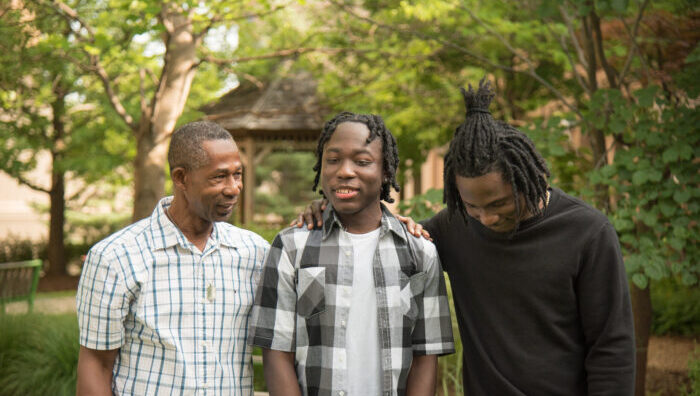
Stem cell transplantation is now available as a possible treatment option at London Health Sciences Centre (LHSC) for adult patients with sickle cell disease (SCD).
While this treatment has been available for patients with SCD elsewhere in the province, in November 2024, through a collaborative team effort, the Blood and Marrow Transplant Program (BMTP) at LHSC performed the procedure as treatment for an adult patient with the condition for the first time since 2007.
LHSC will now be able to offer this procedure on a consistent basis to other eligible patients, helping to provide care closer to home.
SCD is one of the most common inherited blood disorders, disproportionately affecting Black patients. The condition changes a person’s hemoglobin, with their red blood cells – which are typically shaped like discs – instead shaped like sickles. Sickling of the cells leads to blockages in the arteries and can cause strokes and episodes of significant pain.
Awareness of SCD among health-care practitioners is still limited with patients’ symptoms often overlooked or underestimated because the condition often manifests as generalized pain without visible injury.
“The history of sickle cell care is tied with anti-Black racism and discrimination and LHSC being able to offer this treatment in our region is a demonstration of how we are working towards equitable access to care and health equity for those with this condition,” says Dr. Ziad Solh, Medical Director, Adult Hemoglobinopathy Program (of the Lifespan Hemoglobinopathy Program) and a hematologist and transfusion medicine physician at LHSC.
The transplant last November involved two brothers from London, Jahmari and Jahvaughn Halstead. Jahmari was diagnosed with SCD at birth and had been in and out of hospital both in Jamaica, where his family is originally from, and in Canada. The now 19-year-old would often miss school growing up because of intense pain caused by SCD.
The transplant last November involved two brothers from London, Jahmari and Jahvaughn Halstead. Jahmari was diagnosed with SCD at birth and had been in and out of hospital both in Jamaica, where his family is originally from, and in Canada. The now 19-year-old would often miss school growing up because of intense pain caused by SCD.
As he grew older, his care team prescribed medication to help manage his condition, but his symptoms persisted.
Jahmari’s care team at LHSC, including Dr. Solh, determined he was a good candidate for a stem cell transplant because he was a younger patient, and his 27-year-old brother Jahvaughn was a match.
To prepare for the procedure, Jahmari underwent chemotherapy and radiation therapy to obliterate his stem cells, and he was admitted to hospital to receive the transplant.
“It takes about two weeks for the patient to stabilize after this process and they are an inpatient for one month,” explains Dr. Uday Deotare, Hematologist and Blood and Marrow Transplant Physician, Medicine at LHSC who supports Jahmari’s care since his transplant.
“During the month the stem cell transplant patient is in-hospital, they effectively have no immune system and could get an infection which could be life threatening. Our team ensures the patient is well cared for and infection risks are minimal as their new stem cells help build back their immune system slowly. The risk reduces significantly as time passes. It takes about a year for a new immune system to be fully functional.”
If the transplant is successful, the procedure effectively cures a patient’s SCD.
Jahmari continues to be followed by Dr. Deotare and Dr. Solh and he attends regular check-in appointments. Eventually, he’ll only need to follow-up with his care team once a year for the rest of his life.
“The cure allows us to feel reassured – so follow up is necessary to make sure there are no complications. We hope to see this cure by stem cell transplant used for eligible patients with sickle cell disease moving forward,” shares Dr. Solh. “This first is a great case that highlights the collaboration across departments including the paediatric and adult hemoglobinopathy programs and other teams within LHSC, like the ones in the Blood and Marrow Transplant Program.”
As for Jahmari, he’s feeling much better since his procedure last year.
“I don’t have yellow in my eyes, and I just don’t feel like I have sickle cell disease anymore,” he shares. “Now, after my transplant, I want to focus on my future and going to college. I’m starting my college program in January 2026, and I’m looking forward to it.”

